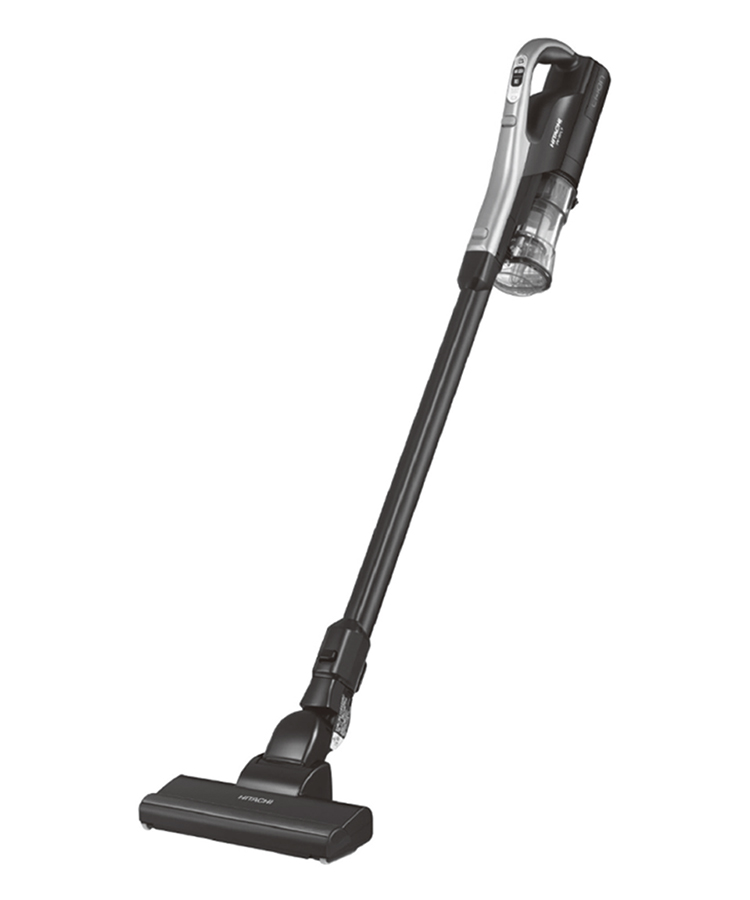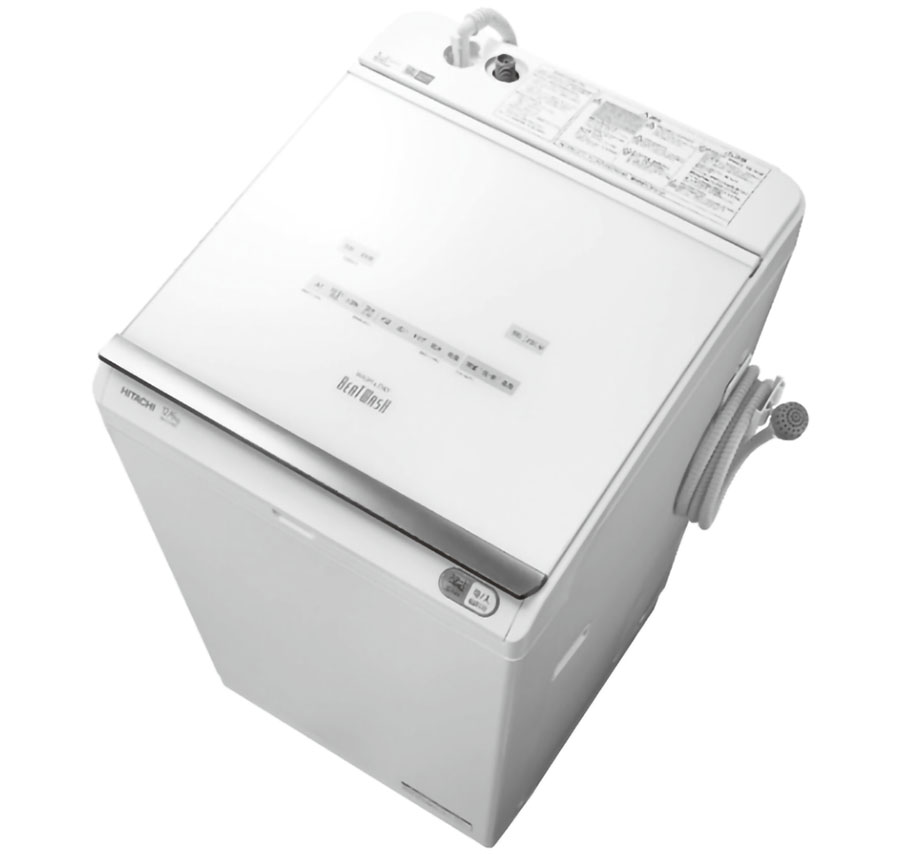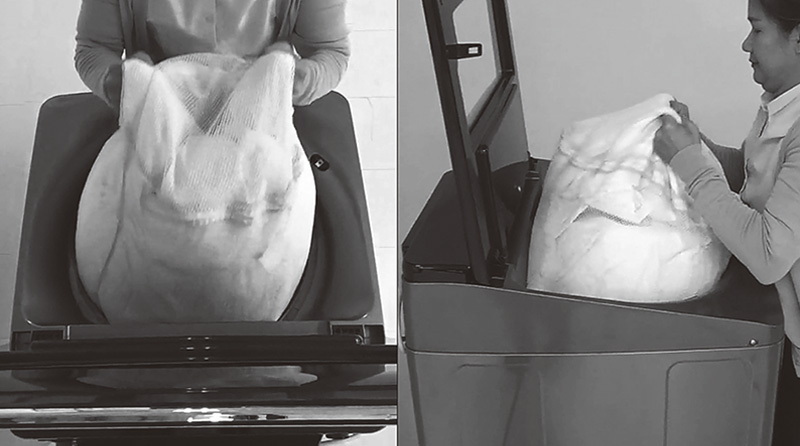Smart Life Solutions for People EverywhereDevelopment of Products that Meet Individual Needs
Highlight
Hitachi Global Life Solutions, Inc. has adopted a new corporate slogan based on a message of 360-degrees of happiness that expresses the aim of delivering new value through a genuinely close relationship with customers. On this basis, it is rolling out new products in Japan that seek to enhance customers’ quality of life by: (1) developing connected home appliances that utilize digital technology, (2) coming up with unique functions in response to customer feedback, and (3) working to generate “design value” that brightens people’s daily lives. Outside Japan, the company is taking a global perspective to product development through collaboration with the Global Product Development Center in Thailand. This article describes the work done to date.

1. Introduction
Hitachi Global Life Solutions, Inc. (Hitachi GLS) has adopted “working closely with customers to design their daily lives” as its new concept for future Hitachi home appliances (see Figure 1).
A look at the social landscape of Japan shows how lifestyles are evolving as the structure of society undergoes major changes. Once the norm, the number of stay-at-home housewives is now declining. Accompanying this decline is a rise in the number of dual-income households where housework needs to be split between both partners. Moreover, the population of elderly (65 years and older) is also increasing with an increasing number of “active seniors” who remain physically fit while also harboring concerns about deteriorating health. Also increasing are the number of single- or two-person households, a cohort characterized by a desire for quality and life fulfillment. As the lifestyles of these groups become increasingly diverse, what people want from home appliances is also changing rapidly (see Figure 2).
What is meant by products that meet individual needs given this growing lifestyle diversity? The answer to this question lies in feedback from customers. This includes the activities of the Lifestyle Research Center, which conducts surveys of how people actually live, tests products for ease-of-use, and researches customer needs; the establishment of the Voice of Customer (VoC) Center to identify the dissatisfactions of product users and potential improvements; and engaging in joint research with universities and other external partners. Hitachi listens to what individual consumers have to say and incorporates what it learns into products and services.
The product development undertaken by means of these activities seek to enhance customers’ quality of life by: (1) utilizing digital technology to develop connected home appliances that can be made more convenient by post-sale software updating, (2) coming up with unique functions in response to customer feedback, and (3) working to generate “design value” that brightens people’s daily lives.
2. Development of Connected Appliances that Utilize Digital Technology
Hitachi is enhancing ease-of-use for customers by developing dedicated smartphone apps for each of the connected appliances it currently has under development. These apps can be used for things like controlling the appliance, checking its operation, and accessing support functions. Further improvements in usability are also provided by the post-sale updating of software, including the addition of new functions such as compatibility with smart speakers. Whereas the capabilities of past whiteware have been limited to what they are capable of at the time of purchase, connected appliances are designed for ongoing improvements delivered by connecting to the Internet and updating their software. In this way, Hitachi is developing appliances that are “software-defined,” meaning that they can evolve along with their users’ lifestyles. Hitachi is also working with its partners to deliver new services that use connected appliances to interface with the customer (see Figure 3).
Hitachi released the HT-L350KTWF induction cooktop and the RV-EX20 robotic vacuum cleaner in February 2018. Addressing a common concern for customers, the induction cooktop comes with an easy-to-use function for looking up recipes on a smartphone that is able to download instructions to the cooktop to specify the cooking time and other settings automatically. Similarly, a smartphone can be used to control the robotic vacuum cleaner remotely and to program its operation and check its past activity. Post-sale software updates have also made the vacuum cleaner easier to use, including the addition of new operating modes and voice-activation through interoperation with smart speakers (see Figure 4). The range of connected appliances is being progressively expanded to include washing machines, refrigerators, and microwave ovens.
3. Unique Functions Inspired by Customer Feedback
As lifestyles become increasingly diverse, so too do the features sought in home appliances. This in turn calls for manufacturers to come up with unique functions in response to what customers are asking for. This section describes such features developed for refrigerators, cordless handstick vacuum cleaners, washers, and air conditioners.
3.1 Selectable Zone Refrigerator
A survey that asked refrigerator users about appliance capacity and layout found that households with elementary- or junior-high-school-aged children had large freezer compartments whereas the elderly kept large amounts of vegetables (see Figure 5). That the sorts of food families want to keep in the refrigerator change as they grow, with differences in freezer and vegetable compartment capacities between households with different ages or family structures, necessitated the idea of an appliance with adjustable sizes for these compartments.
The Selectable Zone refrigerator went on sale in February 2019 featuring two drawers in the lower part of the appliance that could be set as either freezer, chiller, or vegetable compartments as needed. This provided users with the ability to change the refrigerator layout to suit their particular living practices. Families in which both partners are busy working and who use a lot of frozen foods, for example, could configure both drawers as freezers, whereas households that use a lot of vegetables could use the more conveniently located upper drawer for this purpose (see Figure 6).
3.2 Lightweight Cordless Handstick Vacuum Cleaner
Societal factors such as the increasing number of dual-income households are behind expanding demand for cordless handstick vacuum cleaners that are ready to use whenever needed. Along with suction power, weight is a leading consideration in purchasing decisions (see Figure 7). Unfortunately, using a larger fan motor or higher-capacity battery to increase suction comes at the cost of greater weight. While top-end models feature strong suction, Hitachi has also come up with a cordless handstick vacuum cleaner designed for light weight. With a standard weight*1 of only 1.4 kg, it is the lightest such appliance Hitachi has ever produced (see Figure 8). It has also developed the small and lightweight TR high-performance motor that delivers strong suction with small size and light weight. The result is a powerful appliance that has a light feel whether used as a stick or a handheld cleaner.
- *1
- Standard weight is the combined weight of the appliance, extension tube, and head.
3.3 Beat Wave Wash Top-loading Washer Dryer with AI-based Washing
Factors such as the rising number of dual-income households are driving demand for laundry to be done quickly and easily.
The Beat Wave Wash has an artificial intelligence (AI) washing function that controls each step of the wash automatically, using sensors to collect information on things such as the detergent, fabric type, how dirty the clothes are, water hardness, and laundry agitation. Examples of how this works include extending the wash cycle when the presence of many dirty clothes makes cleaning performance a priority, or reducing the amount of water used when well-rinsed clothes makes it more important to be economical. This not only gets clothes clean in an efficient manner, but also eliminates the task of specifying machine settings for each wash. The Beat Wave Wash also features an automatic dispenser for liquid detergent and fabric softener, an industry-first for a top-loading washer dryer*2. This automatically dispenses appropriate amounts of liquid detergent and fabric softener for each wash (see Figure 9 and Figure 10).
- *2
- BW-DX120C. Among top-loading washer dryers on the Japanese market, as of October 3, 2018.
3.4 Shirokuma-kun X Series Room Air Conditioner with Frost Wash Fan Robo Feature
Fig. 11—Dissatisfaction with Room Air Conditioners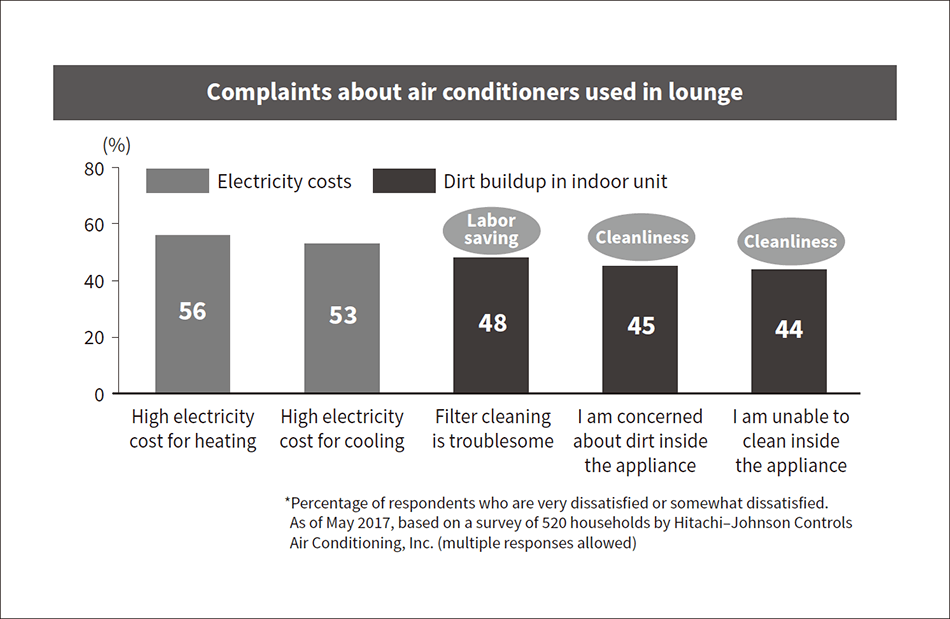 Common complaints are the difficulty of filter cleaning, concern about dirt inside the appliance, and the inability to clean the interior.
Common complaints are the difficulty of filter cleaning, concern about dirt inside the appliance, and the inability to clean the interior.
Fig. 12—Shirokuma-kun X Series Room Air Conditioner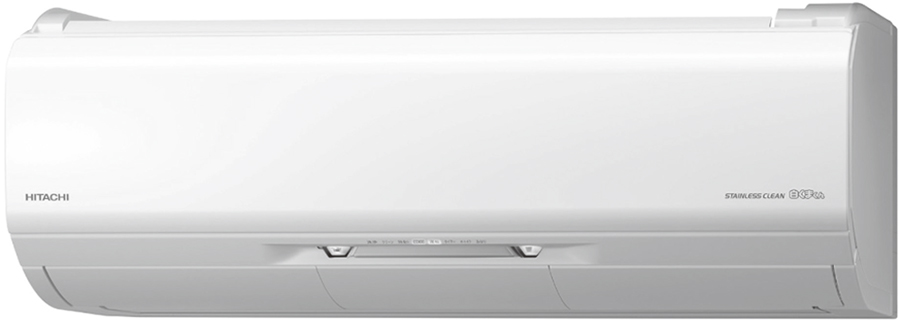 Incorporating the Frost Wash Fan Robo feature, this air conditioner is designed with internal cleanliness in mind.
Incorporating the Frost Wash Fan Robo feature, this air conditioner is designed with internal cleanliness in mind.
Market research on home air conditioners has found that many people express dissatisfaction with the difficulty of filter cleaning and concern about dirt inside the appliance and the fact that they cannot get access to clean it (see Figure 11). Air conditioners are typically mounted high up in rooms and gaining access to the interior requires the removal of covers or other parts. This makes it difficult for users to get at and clean components like the heat exchanger or fan that are located behind the filter.
The buildup of dust and other dirt can result in unpleasant odors, diminished heating or cooling performance, and unnecessarily high electricity bills.
Accordingly, Hitachi addressed the interior cleanliness of air conditioners in product development and, in 2006, came up with the Stainless Clean system that features automatic filter cleaning, with stainless steel used in the air flow channels running through the appliance, the flaps, and the filters.
This was followed in 2017 with Hitachi adding the Frost Wash automatic cleaning function to its products. This function cleans the heat exchanger, an internal part of the air conditioner that is difficult for users to access, and works by lowering its temperature below freezing and then rapidly melting the frost that forms. Along with keeping the interior of the appliance clean, the Frost Wash function also prevents loss of performance due to clogging with dust.
However, while the Stainless Clean system and Frost Wash function helped improve internal cleanliness, they did not address the fan.
Being located behind the heat exchanger means the fan cannot be accessed for cleaning. Instead, Hitachi further enhanced the Frost Wash function in 2018 by devising the Frost Wash Fan Robo function that extends the cleaning effect to the fan. Automatically cleaning the heat exchanger and fan at regular intervals makes user cleaning unnecessary and keeps the air quality fresh. It also minimizes performance degradation due to dirt and avoids unnecessarily high electricity bills (see Figure 12).
4. Generating “Design Value” that Brightens People’s Daily Lives
In pursuit of well-designed products and new design qualities that are in step with changing social trends, Hitachi GLS set about design improvement in earnest by embarking on the “Hitachi meets design PROJECT” in partnership with the Global Center for Social Innovation – Tokyo of Hitachi’s Research & Development Group. The project’s design philosophy of Less but Seductive (objects that appear restrained at first glance and yet exert a fascination on people) aims to come up with designs that, while not attracting attention to themselves, have a practicality that users come to appreciate through regular use, become attached to, and keep using over time. This approach has served as a basis not only for in-house design improvement, but also for projects with external designers. The first product to go on sale that was developed on this basis was an air purifier by the industrial designer Naoto Fukasawa.
4.1 Air Purifier Designed by Naoto Fukasawa to Sublimate Product Utility in Beauty
This product was designed for enhanced compatibility with its surroundings, featuring a front panel with a uniform texture finish that is made up entirely of horizontal louvers to give the impression of its effectively drawing-in dirty air. The unit has also been designed with a distinctive rear-side shape to fit neatly into the corner of a room, circulating air throughout the room from this unobtrusive location. It also features a front panel design that makes pre-filter removal easy (see Figure 13).
Fig. 13—EP-PF120C Air Purifier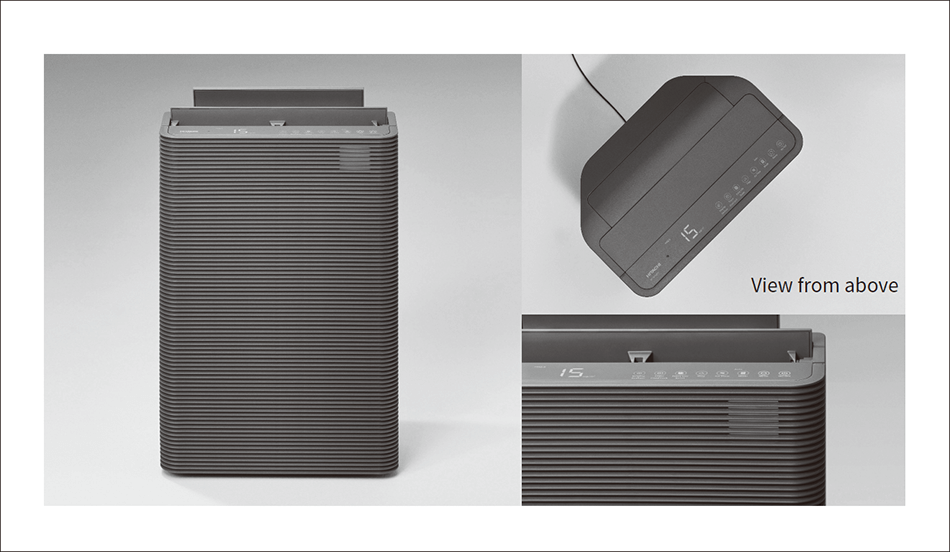 The air purifier was designed for compatibility with its surroundings, featuring a front panel of horizontal louvers.
The air purifier was designed for compatibility with its surroundings, featuring a front panel of horizontal louvers.
5. Product Development from a Global Perspective
5.1 Global Product Development Center
Fig. 14—Roles of Organization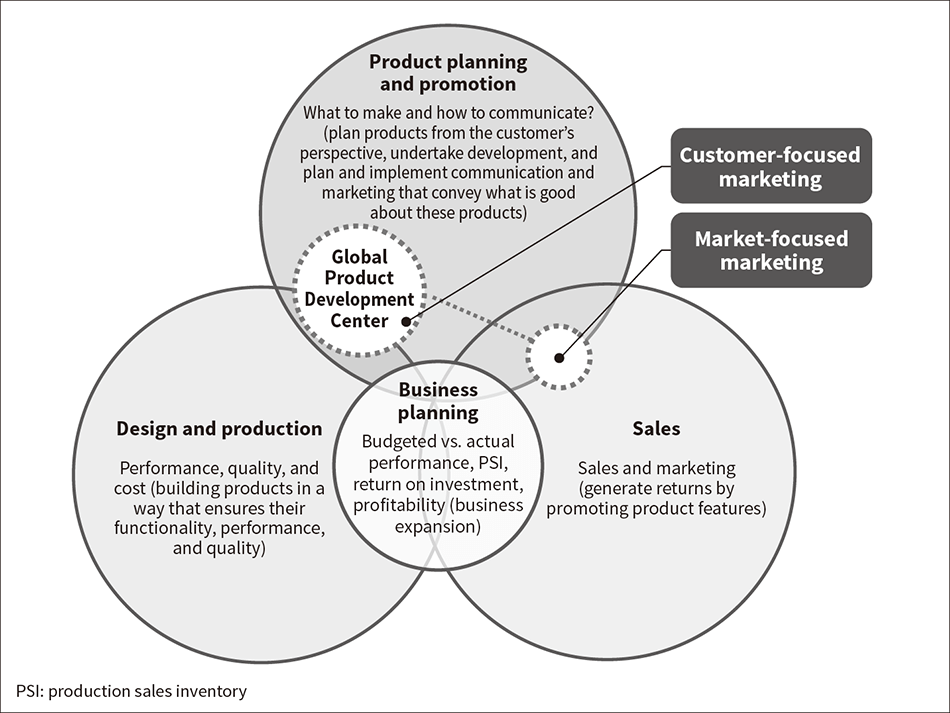 The organization seeks to be one that can consider and assess products from the perspective of the people who use them, with an emphasis on customer viewpoints that are the basis for product planning.
The organization seeks to be one that can consider and assess products from the perspective of the people who use them, with an emphasis on customer viewpoints that are the basis for product planning.
With rising living standards in Southeast Asia driving increased demand for home appliances with high added value, Hitachi established its Global Product Development Center at Hitachi Consumer Products (Thailand), Ltd. in April 2017 in order to take account of local needs from the development stage and to rapidly incorporate these into product development and sales strategies.
Marketing functions that adopt customer and market perspectives feature prominently in the center’s activities and help it consider what sort of products to build, this being the starting point for development. The aim is to manufacture products that people will want by using surveys and testing that relate to development (see Figure 14). The center also seeks to improve how it goes about analyzing changes in national markets and achieving sales in new markets or through new channels.
To provide an example of the work done by the Global Product Development Center, this section describes the development process and sales strategies for the new 640 Series of top-loading washing machines that went on sale in September 2018 targeting the Southeast Asian market, especially Thailand.
5.2 Customer Survey Summary and Results
Fig. 15—Sequence of Activities The design division is provided with timely feedback on the testing and evaluation undertaken during development.
The design division is provided with timely feedback on the testing and evaluation undertaken during development.
The Global Product Development Center plays an important role in development by undertaking a testing program in parallel with product development (see Figure 15).
- Market survey
As part of the development of the new 640 Series, and in order to survey the products currently on sale (comparative assessment with competing products), the Global Product Development Center surveyed 100 people in Bangkok and Ho Chi Minh City in September 2017 about the attractiveness of the exterior designs and the in-store point of purchase (POP) and catalog advertising. Along with assessments of ease-of-use and practicality (ease of loading and unloading and of setting the wash program) and a comparison of washing performance, the survey also looked at how the products were actually used, such as asking how people normally go about doing their laundry (see Figure 16).
The results indicated that the exterior design was out of step with the current market trend toward having a large number of buttons. Specifically, the current control panel had been designed for simplicity (with frequently used buttons prominently positioned while buttons used for detailed settings are located under a cover), and although this worked well in practice, it came across as too simple in the showroom. Similarly, the in-store POP advertising was found to be weaker than that of competitors in terms of how it promoted the key customer concern of washing performance, doing a poor job of conveying the benefits of the product. - Hypothesis testing
As well as providing prompt feedback to the design division on the results of the market survey, suggestions for addressing the identified weaknesses (control panel issues with visibility, practicality, legibility, and intelligibility of Thai language labeling) were also assessed with local staff providing their own unique input. The conclusions were then transformed into the development requirements (see Figure 17). - Prototype testing and final testing
Another survey involving 100 people was conducted in Bangkok prior to commencing commercial production, covering the suitability of the final exterior design, in-store POP advertising and catalog material. As well as being incorporated into the final versions of the promotional material used for in-store POP advertising and the catalog, the survey findings also helped energize the sales process through their use in training material for boosting the confidence of sales staff.
5.3 Design and Specifications of New 640 Series Top-loading Washing Machines
The Global Center for Social Innovation – Tokyo led the design process, drawing on the results of the market survey and with the following design objectives.
- Satisfy the requirements for washing machines that are particular to Southeast Asia (ease of use and practicality)
- Design the washing machine to be visually attractive (with a metallic finish that conveys solidity)
- Adopt a design that facilitates choices of color, material, and finish (CMF)*3 that suit local preferences
A design with a low front, wide opening, and easy loading and unloading of clothes was achieved by locating the control panel on the glass cover. Use of touch-operated switches in the control panel and a handle that makes use of the gap between the glass cover and the body of the appliance resulted in a design that is easy to clean with few indentations or protrusions around the cover and opening. The handle itself extends across the entire width for ease of opening and serves to accent the exterior.
Meanwhile, along with “shower-plus” and “water power” functions that check and adjust the quantity and flow of water, the washer dryer was also equipped with additional functions to address local requirements in the form of a hot-water washing function for killing germs and preventing yellowing and a setting for washing clothes with different levels of dirtiness in the same load.
The appliance has also received public acknowledgement for the meticulous way in which it was adapted to suit local requirements, being chosen for a FY2018 Good Design Award and being recognized at the iF Design Awards 2019 run by the international design promotion company iF Industrie Forum Design Hannover e.V. (see Figure 18).
- *3
- CMF is a registered trademark of FEEL GOOD CREATION, Inc.
Fig. 18—Final Choice of Exterior Design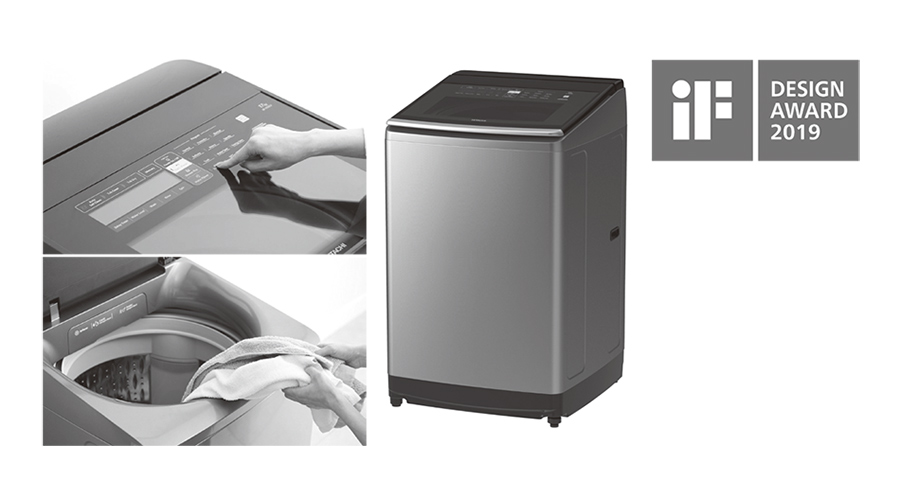 One of the factors behind winning the award was a development process in which the designers themselves participated in surveys so that highlighted issues could be resolved on the spot.
One of the factors behind winning the award was a development process in which the designers themselves participated in surveys so that highlighted issues could be resolved on the spot.
5.4 Use in Promotional Material
Fig. 19—In-store POP Advertising Used on New Model This showroom POP advertising is used on the new model for the Southeast Asia market.
This showroom POP advertising is used on the new model for the Southeast Asia market.
The results of the market survey indicated that the previous in-store POP advertising that focused on automatic tub cleaning and cleanliness performance was inadequate given the local market’s emphasis on stain removal, and that as a consequence it was lacking in showroom appeal in comparison to competitors’ advertising. Acknowledging this, Hitachi launched new advertising after working through a process of revising the visuals and how the appliance’s washing performance was conveyed, hypothesis testing, and market research on the suitability of the final product (see Figure 19).
6. Conclusions
Hitachi GLS has earned a strong reputation for supplying customers with a high level of core performance and distinctive added value. As lifestyles become increasingly diverse, so too do the features sought in home appliances. Hitachi GLS intends to continue developing products in a way that listens closely to what customers want and delivers genuinely inclusive value, both in Japan and overseas.













